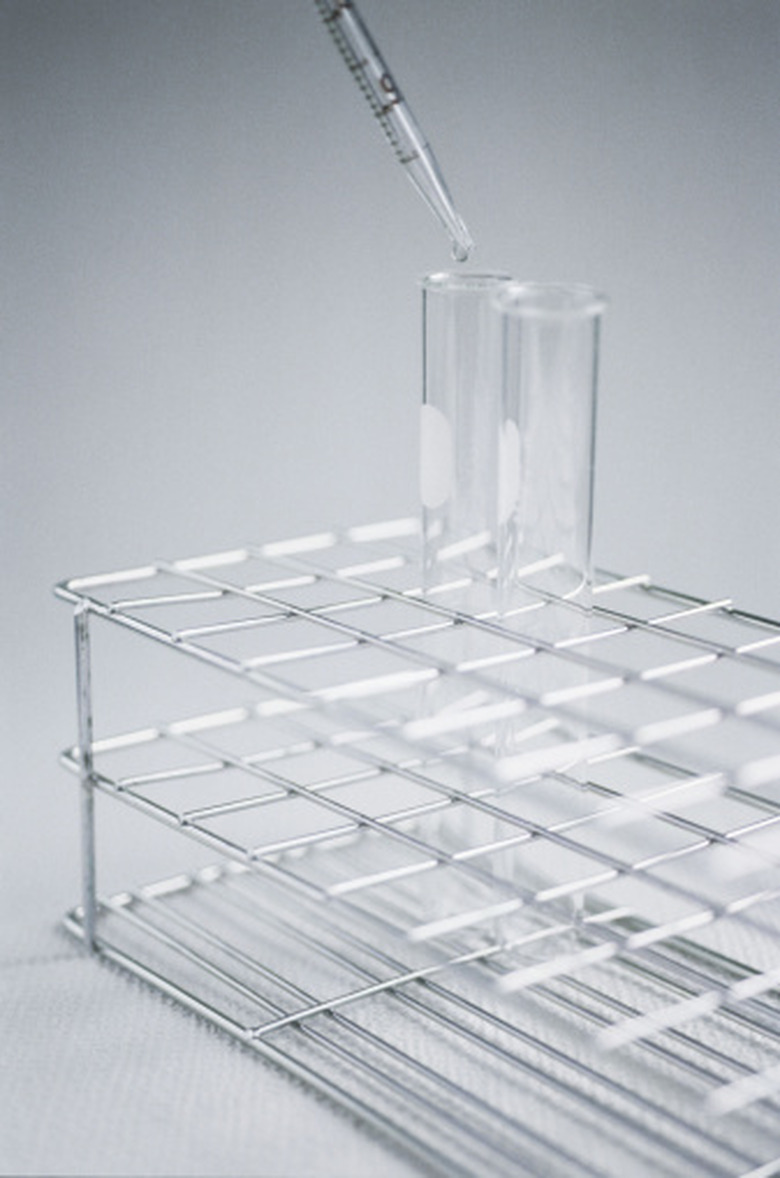List Of Arrhenius Acids & Bases
One of the oldest definitions used in the study of acid base chemistry is one derived by Svante August Arrhenius in the late 1800s. Arrhenius defined acids as substances that increase the concentration of hydrogen ions when added to water. He defined a base as a substance that increases hydroxide ions when added to water. Chemists typically refer to Arrhenius bases as proton acceptors and Arrhenius acids as proton donors. This definition is very general because it describes acid base chemistry only in aqueous solutions. To represent the transfer of the hydrogen ion to water from solid hydrochloric acid, this chemical equation describes the transfer of hydrogen ions to form hydronium ions:
HCl(g) + H2O(l) —-> H3O+(aq) + Cl-(aq)
where g = gram (solid) l = liquid and aq = aqueous. H3O+ is the hydronium ion.
Symbols Used and Periodic Table Representation of the Elements
Symbols Used and Periodic Table Representation of the Elements
Chemical equations use abbreviations from the Periodic Table of the Elements. Hydrogen is abbreviated as H, oxygen by O, Chlorine by Cl, and Sodium is abbreviated as Na. Charged ions are indicated by plus (+) and minus (-) signs for positively and negatively charged ions respectively. A positively charged ion without a number is assumed to mean one positively charged ion. A minus sign next to a negatively charged ion without a number is assumed to mean one negatively charged ion. If more than one ion is present, that number is used. The initial substances mixed are called the reactants and are always placed on the left side of the chemical equation. Reactants make products. The products are always listed on the right side of the equation. Above the arrow, between reactants and products, shows a solvent if one is used; if heat or other catalyst is used in the reaction, it is listed above the arrow. The arrow also shows in which direction the reaction will proceed. In cases of reactions that continue until equilibrium is reached, two arrows going in opposite directions are used.
HCl is an Example of an Arrhenius Acid
HCl is an Example of an Arrhenius Acid
An example of an Arrhenius acid chemical equations is:
HCl(g) —-H2O—-> H+(aq) + Cl-(aq)
HCl(g) = Solid hydrochloric acid (in a binder). Water is the solvent and the products are the positively charged hydrogen ion in aqueous solution and the negatively charged chloride ion in aqueous solution. The reaction proceeds from left to right. The Arrhenius acid produces hydrogen ions.
NaOH is an Arrhenius Base
NaOH is an Arrhenius Base
An example of an Arrhenius acid chemical equation is:
NaOH(s) —-H2O—-> Na+(aq) + OH-(aq) where s = in solution
NaOH(s) = Sodium hydroxide solution. Water is the solvent and the products are the positively charged sodium ion in aqueous solution and the negatively charged hydroxide ion in aqueous solution. The Arrhenius base produces hydronium ions.
Acids and Bases as Defined by Arrhenius
Acids and Bases as Defined by Arrhenius
Arrhenius defined acids and bases in aqueous solutions. Therefore any acid that dissolves in water can be considered an Arrhenius acid and any base that dissolves in water can be considered an Arrhenius base.
Cite This Article
MLA
Tides, Ocean. "List Of Arrhenius Acids & Bases" sciencing.com, https://www.sciencing.com/list-arrhenius-acids-bases-7428732/. 24 April 2017.
APA
Tides, Ocean. (2017, April 24). List Of Arrhenius Acids & Bases. sciencing.com. Retrieved from https://www.sciencing.com/list-arrhenius-acids-bases-7428732/
Chicago
Tides, Ocean. List Of Arrhenius Acids & Bases last modified March 24, 2022. https://www.sciencing.com/list-arrhenius-acids-bases-7428732/
